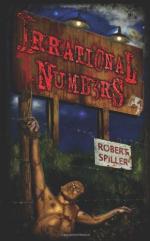|
This section contains 390 words (approx. 2 pages at 300 words per page) |
Irrational numbers—non-terminating, non-repeating decimal numbers—have been the source of much puzzlement to mathematicians throughout history. The Greeks of the Classical Period (600 b.c. -300 b.c.) were the first mathematicians to puzzle over irrational numbers. For example, followers of the Greek mathematician and mystic Pythagoras grappled with their existence. As the mystical perfection of numbers was especially important to them, Pythagoreans attempted to reduce the relationships between objects in the world to whole numbers or ratios of whole numbers. Therefore, Pythagoreans were greatly alarmed by the discovery that some ratios could only be expressed as irrational numbers--for example, the ratio of a diagonal to the side of a square. According to legend, a group of Pythagoreans at sea threw Hippasus (fl. c.500 b.c.), the unlucky discoverer of this phenomenon, overboard for disclosing such a distressing fact.
Other Greek scholars were not so limited in their thinking. Two centuries later, about 300 b.c., the Greek philosopher Euclid attempted to classify the irrationals in book ten of his well-known geometry text, the Elements. However, as Euclid was only familiar with irrational numbers representable by geometrical algebra, his classification was somewhat incomplete by modern standards.
In the Alexandrian or Hellenistic period of Greek civilization (300 b.c.- a.d. 600), irrational numbers were still troubling mathematicians. When faced with an equation having an irrational root, Diophantus frequently altered the equation to obtain a rational solution. On the other hand, the Greek surveyor Heron (first century a.d.) accepted irrational numbers readily, using an approximation of their value when representing them.
Around a.d. 500, Hindu mathematicians were the first to face head-on the problems of irrational numbers. They treated them with the same properties as integers and used them correctly in mathematical procedures. Likewise, ninth-century Arabs worked freely with irrational numbers, although they rejected negative numbers.
In sixteenth-century Europe, irrational numbers were accepted and widely used, although mathematicians remained baffled in their attempts to classify them. Not until 1872 did Richard Dedekind (1831-1916), a German mathematics professor, finally clarify the issue. In his book Stetigkeit und irrationale Zahlen, he presented a theory of irrational numbers, their properties and definition. Ten years later, Dedekind released a follow-up book on irrationals, whose title translates The Integer Numbers Have Been Made by God, Everything Else Is the Work of Man.
|
This section contains 390 words (approx. 2 pages at 300 words per page) |


